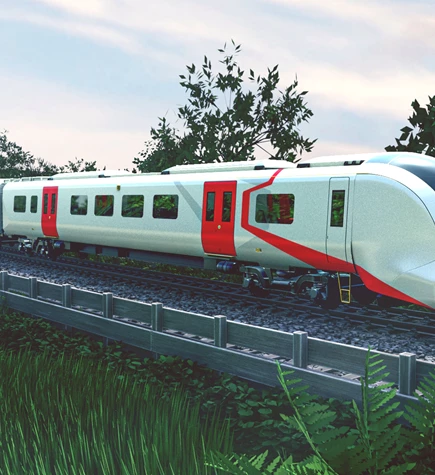We are becoming a climate change innovator and are committed to delivering a 100% reduction in CO₂ emissions by 2030 and a 100% reduction through our entire value chain by 2050.
Our decarbonisation strategy focuses on three pillars to drive change:
Drive a modal shift
Modal shift is incredibly important if Europe is serious about hitting its emission targets – a 55% reduction by 2030 and climate neutrality by 2050. But flying is the most polluting form of travel – 7 times more harmful to the environment than driving & 20 more than rail – and short haul flights represent 31% of total flights in Europe.
High speed rail is an important part of the solution for cutting air travel.
In Italy, where we have provided our flagship very high-speed services the ETR 1000, we have seen passenger numbers rocket, reaching 40 million in 2018. Explore our high-speed train solutions
Accelerate the decarbonisation of rail
Currently, more than half of rail fleets in Europe still use diesel engines. And while diesel fleets are much greener than car or air travel, they still contribute significantly to carbon emissions. Electrification is slowly increasing across Europe – but there are huge variations by country.
This is where our Masaccio battery hybrid train has provided an instant solution. It can draw on three different energy sources – battery, electric and diesel – and, on lines where it has replaced existing diesel locomotives, it has already cut carbon by up to 50%. Explore our battery train solutions
Decarbonise ourselves
Hitachi Rail - as part of the Hitachi group - aims to become net zero in its own operations by 2030, and across its entire value chain by 2050.
When it comes to our own operations, we have already registered a decrease of 12% in Scope 1 and 2 emissions in FY22, and we’re aiming to reduce these by at least 5% in FY23.
But value chain emissions – referred to as “Scope 3” - typically account for 80 - 90% of a company’s overall greenhouse gas outputs, and they are the hardest to measure.
To address this challenge, in collaboration with EcoVadis, we are using a digital Carbon Accounting Engine to estimate total carbon footprint. It helps us understand the categories and suppliers that represent the most significant carbon impact and prioritise activities to address with our suppliers.
To find out more about how we’re addressing decarbonisation practices, take a look at our latest sustainability report. View our FY22 sustainability report
A Low Carbon Future


